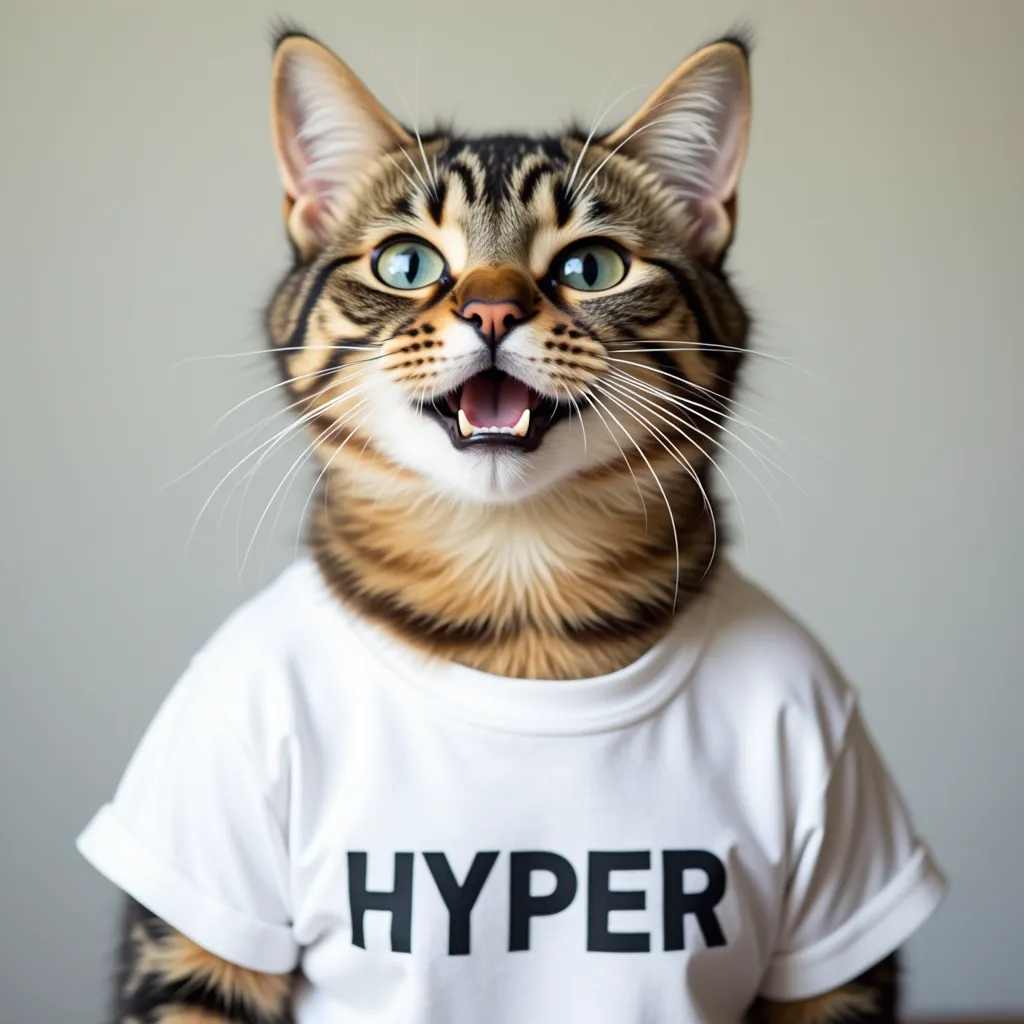flux-schnell-lora
Maintainer: lucataco

76

| Property | Value |
|---|---|
| Run this model | Run on Replicate |
| API spec | View on Replicate |
| Github link | View on Github |
| Paper link | No paper link provided |
Create account to get full access
Model overview
The flux-schnell-lora is an AI model developed by lucataco and is an implementation of the black-forest-labs/FLUX.1-schnell model as a Cog model. This model is an explorer for the FLUX.1-Schnell LoRA, allowing users to experiment with different LoRA weights.
Model inputs and outputs
The flux-schnell-lora model takes a variety of inputs, including a prompt, a random seed, the number of outputs, the aspect ratio, the output format and quality, the number of inference steps, and the option to disable the safety checker. The model outputs one or more generated images based on the provided inputs.
Inputs
- Prompt: The text prompt that describes the image you want to generate.
- Seed: A random seed to ensure reproducible generation.
- Num Outputs: The number of images to generate.
- Aspect Ratio: The aspect ratio of the generated images.
- Output Format: The file format of the output images (e.g. WEBP, PNG).
- Output Quality: The quality of the output images, ranging from 0 to 100.
- Num Inference Steps: The number of inference steps to use during image generation.
- Disable Safety Checker: An option to disable the safety checker for the generated images.
Outputs
- Generated Images: The model outputs one or more generated images based on the provided inputs.
Capabilities
The flux-schnell-lora model is capable of generating images based on text prompts, with the ability to explore different LoRA weights to influence the generation process. This can be useful for creative projects or exploring the capabilities of the underlying FLUX.1-Schnell model.
What can I use it for?
You can use the flux-schnell-lora model to generate images for a variety of creative projects, such as illustrations, concept art, or product visualizations. The ability to explore different LoRA weights can be particularly useful for experimenting with different artistic styles or visual effects.
Things to try
Some ideas for things to try with the flux-schnell-lora model include:
- Experimenting with different prompts to see how the model responds.
- Trying different LoRA weights to see how they affect the generated images.
- Comparing the output of the
flux-schnell-loramodel to other similar models, such as flux-dev-multi-lora, flux-dev-lora, or open-dalle-1.1-lora. - Exploring the use of the
flux-schnell-loramodel in various creative or commercial applications.
This summary was produced with help from an AI and may contain inaccuracies - check out the links to read the original source documents!
Related Models

flux-dev-lora

1.2K
The flux-dev-lora model is a FLUX.1-Dev LoRA explorer created by replicate/lucataco. This model is an implementation of the black-forest-labs/FLUX.1-schnell model as a Cog model. The flux-dev-lora model shares similarities with other LoRA-based models like ssd-lora-inference, fad_v0_lora, open-dalle-1.1-lora, and lora, all of which focus on leveraging LoRA technology for improved inference performance. Model inputs and outputs The flux-dev-lora model takes in several inputs, including a prompt, seed, LoRA weights, LoRA scale, number of outputs, aspect ratio, output format, guidance scale, output quality, number of inference steps, and an option to disable the safety checker. These inputs allow for customized image generation based on the user's preferences. Inputs Prompt**: The text prompt that describes the desired image to be generated. Seed**: The random seed to use for reproducible generation. Hf Lora**: The Hugging Face path or URL to the LoRA weights. Lora Scale**: The scale to apply to the LoRA weights. Num Outputs**: The number of images to generate. Aspect Ratio**: The aspect ratio for the generated image. Output Format**: The format of the output images. Guidance Scale**: The guidance scale for the diffusion process. Output Quality**: The quality of the output images, from 0 to 100. Num Inference Steps**: The number of inference steps to perform. Disable Safety Checker**: An option to disable the safety checker for the generated images. Outputs A set of generated images in the specified format (e.g., WebP). Capabilities The flux-dev-lora model is capable of generating images from text prompts using a FLUX.1-based architecture and LoRA technology. This allows for efficient and customizable image generation, with the ability to control various parameters like the number of outputs, aspect ratio, and quality. What can I use it for? The flux-dev-lora model can be useful for a variety of applications, such as generating concept art, product visualizations, or even personalized content for marketing or social media. The ability to fine-tune the model with LoRA weights can also enable specialized use cases, like improving the model's performance on specific domains or styles. Things to try Some interesting things to try with the flux-dev-lora model include experimenting with different LoRA weights to see how they affect the generated images, testing the model's performance on a variety of prompts, and exploring the use of the safety checker toggle to generate potentially more creative or unusual content.
Updated Invalid Date

flux-dev-multi-lora

281
The flux-dev-multi-lora is an AI model developed by lucataco, who has created several similar models such as the flux-dev-lora, ssd-lora-inference, and ai-toolkit. This model is part of the FLUX.1-Dev series and allows for the exploration of multi-LoRA capabilities. Model inputs and outputs The flux-dev-multi-lora model takes in a variety of inputs to generate images, including a prompt, seed, aspect ratio, number of outputs, guidance scale, number of inference steps, and the ability to specify Hugging Face LoRA paths and scales. The outputs are an array of image URLs in the specified format, such as WEBP. Inputs Prompt**: Text prompt for the generated image Seed**: Random seed for reproducible generation Hf Loras**: Hugging Face paths or URLs to the LoRA weights Lora Scales**: Scales for the LoRA weights, default is 0.8 Num Outputs**: Number of images to generate, up to 4 Aspect Ratio**: Aspect ratio for the generated images, default is 1:1 Output Format**: Format of the output images, default is WEBP Guidance Scale**: Guidance scale for the diffusion process, default is 3.5 Output Quality**: Quality of the output images, from 0 to 100, default is 80 Num Inference Steps**: Number of inference steps, default is 28 Disable Safety Checker**: Option to disable the safety checker for generated images Outputs Array of image URLs**: The generated images in the specified format Capabilities The flux-dev-multi-lora model allows for the exploration of using multiple LoRA weights simultaneously during the image generation process. This can potentially lead to more nuanced and interesting image outputs by combining the effects of different LoRA models. What can I use it for? The flux-dev-multi-lora model can be used for a variety of creative and experimental image generation tasks. For example, you could try combining different LoRA weights to see how they interact and influence the final output. This model could be useful for artists, designers, or anyone interested in exploring the capabilities of AI-generated imagery. Things to try One interesting thing to try with the flux-dev-multi-lora model is to experiment with different combinations of LoRA weights and scales. By adjusting these parameters, you can potentially create unique and unexpected image outputs that blend the characteristics of multiple LoRA models. This can be a fun and rewarding way to discover new and surprising visual styles.
Updated Invalid Date

ssd-lora-inference

2
The ssd-lora-inference model is a proof-of-concept (POC) implementation of the segmind/SSD-1B model as a Cog container. The segmind/SSD-1B is a single-stage object detection model trained on the COCO dataset. This Cog model allows for easy deployment and inference of the SSD-1B model, which can be useful for a variety of computer vision applications. The model is maintained by lucataco, who has also created several other related AI models, including the lcm-ssd-1b, a Latent Consistency Model (LCM) distilled version of the SSD-1B that requires fewer inference steps, and the dreamshaper7-img2img-lcm, which combines the Dreamshaper-7 img2img model with an LCM LoRA for faster inference. Model inputs and outputs The ssd-lora-inference model takes a single input: a prompt that describes the image you want to generate. The model then generates an image based on the prompt. Inputs Prompt**: A text description of the image you want to generate. Outputs Image**: The generated image based on the input prompt. Capabilities The ssd-lora-inference model is capable of generating images based on text prompts. It uses the SSD-1B object detection model, which is a powerful single-stage object detection model trained on the COCO dataset. This model can be useful for a variety of computer vision applications, such as object detection, image segmentation, and image classification. What can I use it for? The ssd-lora-inference model can be used for a variety of computer vision applications, such as object detection, image segmentation, and image classification. For example, you could use the model to detect objects in an image, segment different parts of an image, or classify the contents of an image. Additionally, the Cog implementation of the model makes it easy to deploy and use in production environments. Things to try One interesting thing to try with the ssd-lora-inference model is to experiment with different prompts and see how the model responds. You can try prompts that describe specific objects or scenes, or more abstract prompts that challenge the model's understanding of the world. Additionally, you can try using the model in combination with other AI models, such as the related lcm-ssd-1b and dreamshaper7-img2img-lcm models, to create more complex and powerful computer vision applications.
Updated Invalid Date

hyper-flux-16step

12
hyper-flux-16step is a 16-step version of the Hyper FLUX LoRA model developed by ByteDance. It is an implementation of the ByteDance/Hyper-SD FLUX.1-dev 8-step model as a Cog model by lucataco. Similar models include the Hyper FLUX 8-step LoRA, SDXL-Lightning by ByteDance, and various other FLUX.1-Dev and FLUX.1-Schnell LoRA explorers by lucataco. Model inputs and outputs This model takes a text prompt as input and generates an image based on that prompt. The key inputs include the prompt, aspect ratio, number of outputs, guidance scale, and number of inference steps. The output is an array of image URLs. Inputs Prompt**: The text prompt describing the image to generate Aspect Ratio**: The aspect ratio of the generated image, with options for 1:1, 16:9, 4:3, and custom Num Outputs**: The number of images to generate (up to 4) Guidance Scale**: The guidance scale for the diffusion process (0-10) Num Inference Steps**: The number of inference steps (1-30) Outputs Array of Image URLs**: The generated images as an array of URLs Capabilities The hyper-flux-16step model can generate high-quality images from text prompts, with a focus on photorealistic styles. It is particularly adept at rendering detailed scenes, objects, and characters. The increased number of inference steps compared to the 8-step version allows for more refined and detailed outputs. What can I use it for? The hyper-flux-16step model can be useful for a variety of creative and commercial applications, such as: Generating concept art or illustrations for games, films, or books Creating product visualizations or marketing imagery Exploring creative ideas and inspirations through text-to-image generation Things to try One interesting thing to try with the hyper-flux-16step model is experimenting with different guidance scale settings. Increasing the guidance scale can result in more detailed and faithful renderings of the prompt, while lower values can produce more abstract or stylized outputs. You can also try combining this model with other text-to-image models, such as SDXL-Lightning, to explore different artistic styles and approaches.
Updated Invalid Date